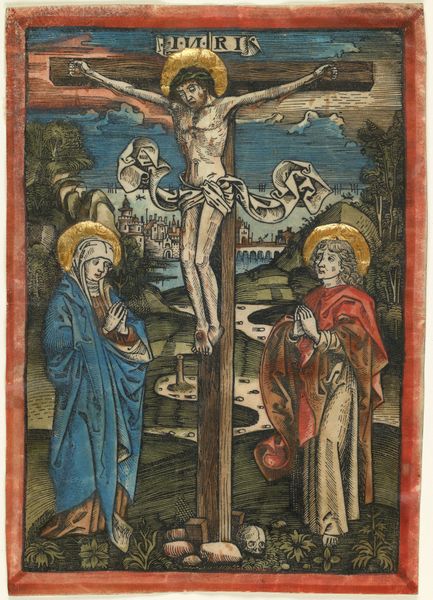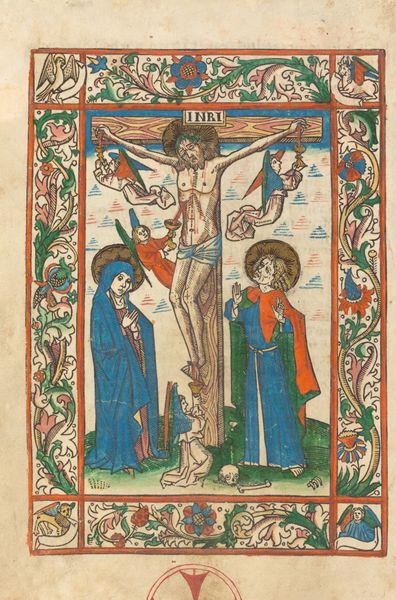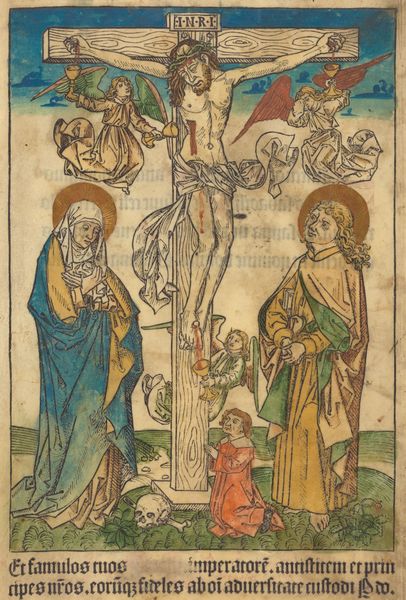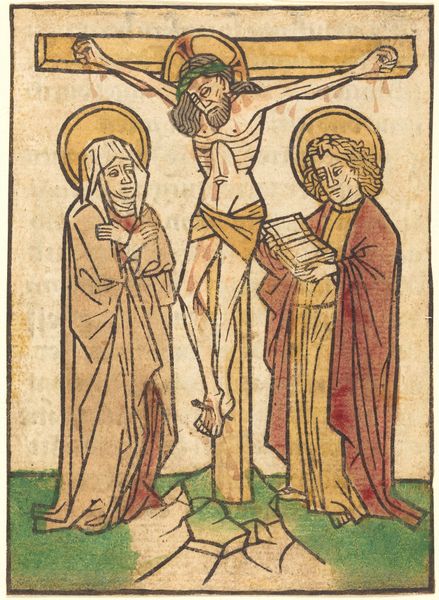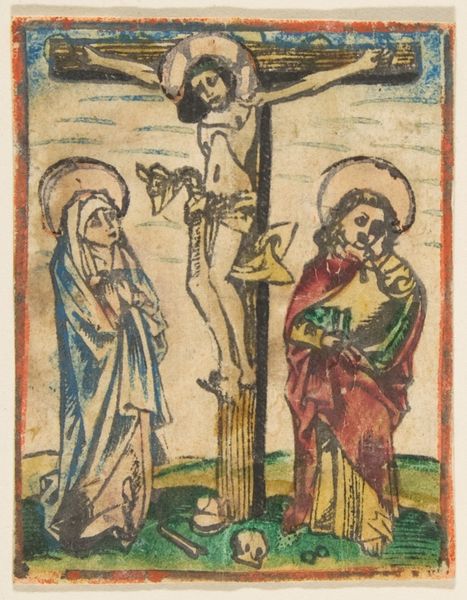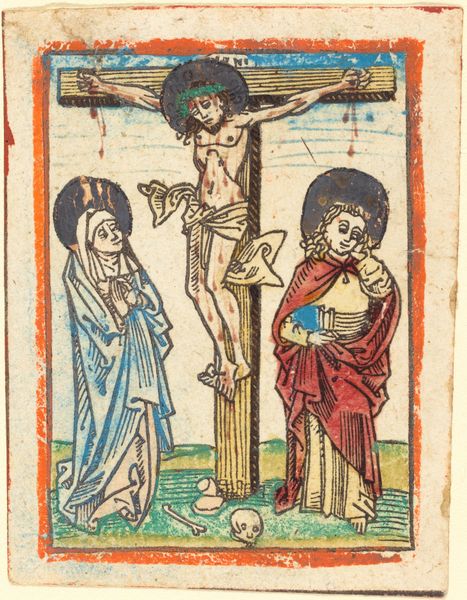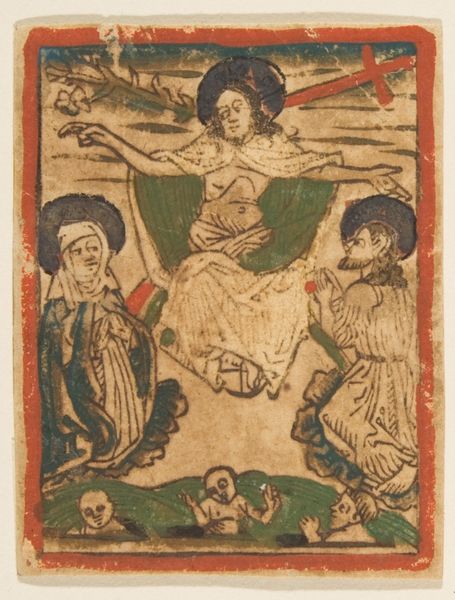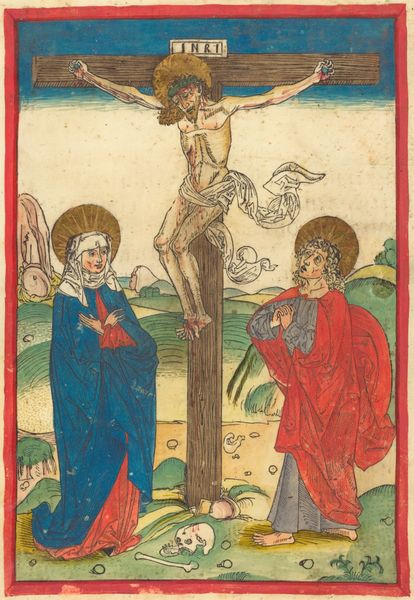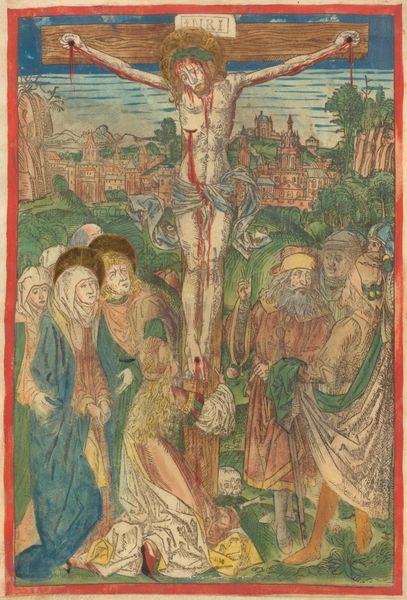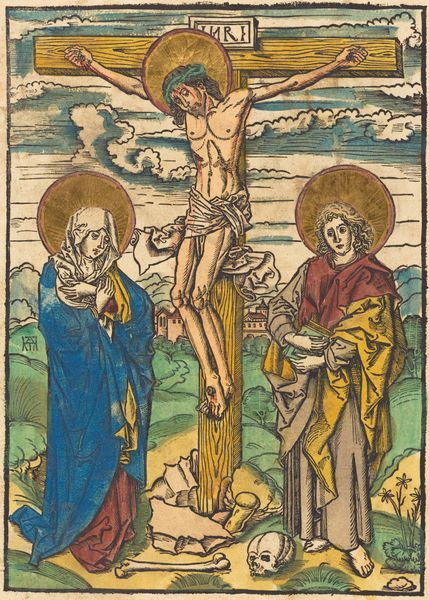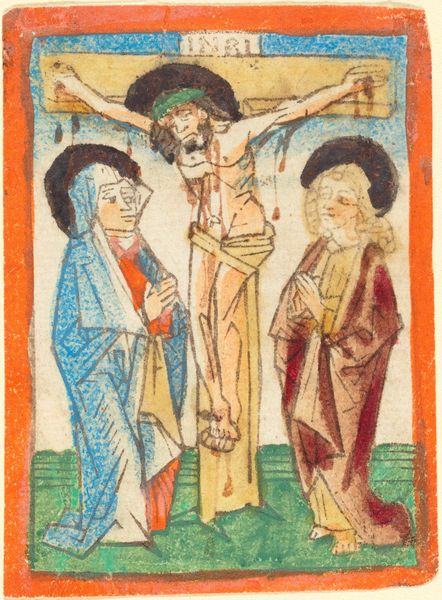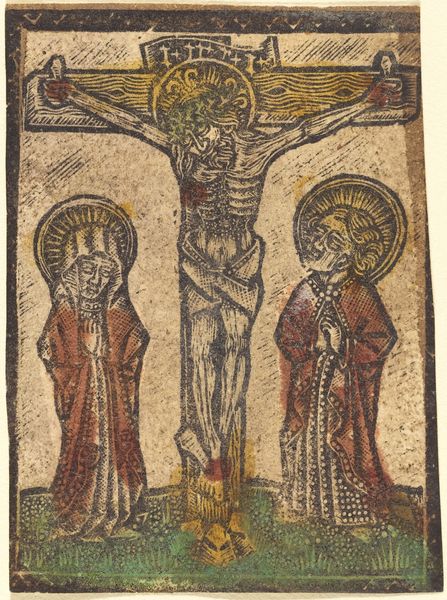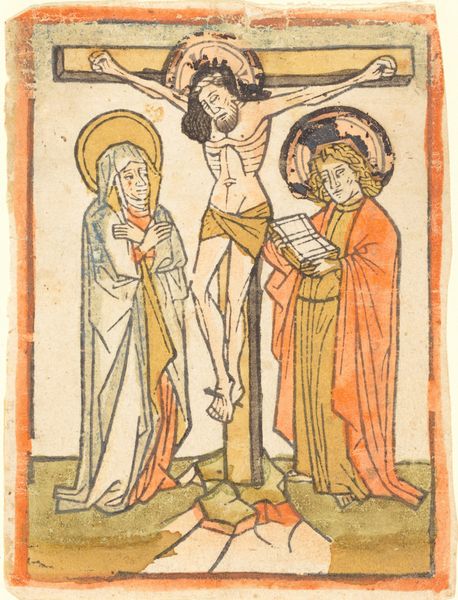
Copyright: National Gallery of Art: CC0 1.0
Curator: This woodcut, titled "Christ on the Cross," dates back to between 1480 and 1500. While its creator remains anonymous, it offers a fascinating glimpse into Northern Renaissance printmaking. Editor: It’s striking. The composition, with its intense focus on Christ's suffering, almost overpowers everything else, but my eye is also drawn to those symbols at the four corners of the image. The roughness of the cut gives the image a palpable weight. Curator: Precisely. Woodcuts like this were often devotional images, cheaply produced and widely disseminated. Consider how easily these prints traveled, spreading religious narratives and influencing popular piety during the late medieval and early Renaissance period. Editor: You can really sense the labor in it; I mean, look at those lines, especially in the robes and landscape. Each one carved by hand. And that red is so visceral, representing blood. It almost jumps off the surface. I wonder about the paper too, its source and how that cheap paper has managed to survive half a millenium. Curator: Indeed. The materiality speaks volumes. The relatively crude technique wasn't just about accessibility; it fostered an immediacy and emotional connection, quite different from the polished perfection sought by some contemporary Italian artists. The composition reinforces it as well, doesn't it? Editor: Absolutely, the setting almost feels deliberately symbolic, too, those halos aren’t symmetrical, Mary’s blue echoes in the landscape but then the woman on the right is framed in these loud reds and yellows; so vivid, to force one’s gaze on key elements of the narrative. Curator: And what of the social functions of the symbols adorning this cross artwork? This artist weaves in potent images such as animals in the corners, an angry Sun with a human face at the top and a town perched behind the crucified body of Christ? These all contribute to how one understands the role of salvation. Editor: It's powerful to consider that an object meant for mass consumption, a multiple, could hold so much…artistic… deliberate choices that reveal deep intentionality from an individual crafter, even if unnamed. And also an entire network of laborers making their contribution. Curator: A tangible link to a very different time and the complex interplay between faith, society, and artistic practice in that world. Editor: Leaving me to admire the tactile and persistent quality inherent in this artifact from so long ago.
Comments
No comments
Be the first to comment and join the conversation on the ultimate creative platform.
